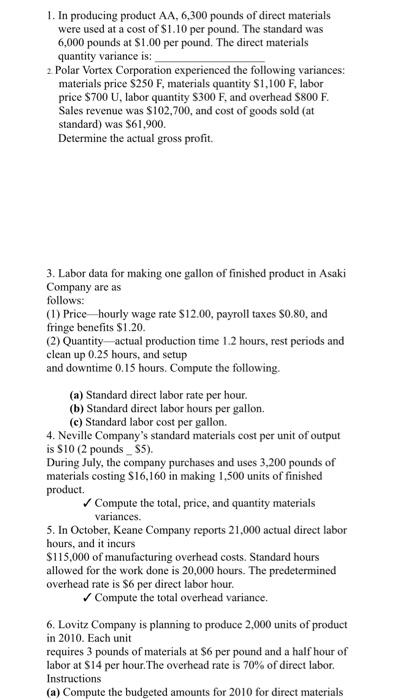Answered step by step
Verified Expert Solution
Question
1 Approved Answer
1. In producing product AA, 6,300 pounds of direct materials were used at a cost of $1.10 per pound. The standard was 6,000 pounds at

Step by Step Solution
There are 3 Steps involved in it
Step: 1

Get Instant Access to Expert-Tailored Solutions
See step-by-step solutions with expert insights and AI powered tools for academic success
Step: 2

Step: 3

Ace Your Homework with AI
Get the answers you need in no time with our AI-driven, step-by-step assistance
Get Started


